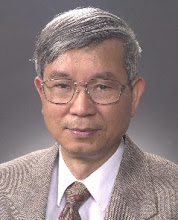http://www.taipeitimes.com/News/editorials/archives/2009/04/21/2003441654
By Chen Yi-shen 陳儀深
Tuesday, Apr 21, 2009, Page 8
During the recent 30th anniversary of the Taiwan Relations Act (TRA), pro-independence political commentators raised some important questions and opinions. However, at a reenactment of the signing of the Sino-Japanese Peace Treaty or the Treaty of Taipei at the Taipei Guest House in 1952, Academia Historica President Lin Man-houng (林滿紅) said the Treaty of Taipei could be used to benefit Taiwan and as a basis to establish that the sovereignty of Taiwan and Penghu belongs to the Republic of China (ROC).
The difference between Lin’s comments and the Chinese Nationalist Party’s (KMT) traditional stance is that she admits that the status of Taiwan and Penghu remained undetermined at the end of World War II and that a new era began in 1952 when the ROC gained sovereignty over Taiwan and Penghu.
Her comments strongly imply that the ROC on Taiwan is independent. There are, however, several things her comments cannot explain. The first is that the background to the Treaty of Taipei was that no Chinese representative had been invited to the San Francisco Peace Treaty talks and that the US after the Korean War purposely avoided clearly stating to whom sovereignty over Taiwan and Penghu belonged, so that the Treaty of Taipei could only be based on, but not surpass, the San Francisco Peace Treaty.
Secondly, a question-and-answer session between Japanese legislators and foreign ministry officials in 1951 agreed that Japan was basing bilateral relations on the fact that the ROC government was the de facto ruler of Taiwan and Penghu and that sovereignty over Taiwan and Penghu should be determined by the Allied Powers.
Lastly, when China and Japan established diplomatic relations in 1972, the Treaty of Taipei lost its significance.
We should realize that until the ROC was forced out of the UN in 1971, it relied on US support to be able to represent China at the UN. The US then severed diplomatic relations with the ROC, annulled treaties and withdrew armed forces from Taiwan in 1978. Since 1979 relations between the two have been regulated by the TRA, the only document that is still crucial today.
If this were not the case, why wouldn’t we emphasize the Sino-American Mutual Defense Treaty of 1954, which gave much more power to the ROC? The major goal of the TRA is to maintain Taiwan’s security and keep it free of threats from China. This is why the TRA states that US policy should “consider any effort to determine the future of Taiwan by other than peaceful means, including by boycotts or embargoes, a threat to the peace and security of the Western Pacific area and of grave concern to the United States.”
In addition, the TRA was promulgated at the height of the Martial Law era and this is why it states that it is the US’ goal to uphold and improve the human rights of all Taiwanese. Times have already changed and mainstream official opinion in the US is that China’s rise has created an increasing number of common interests between China and the US. We should also remember that “moves toward Taiwanese independence” were not an issue back in 1979 and that such moves were later gradually viewed by the US as a threat to peace and security.
In conclusion, while the TRA cannot be expanded on to serve as evidence of Taiwan’s independence, it does stipulate that Taiwan’s future must be decided via peaceful means, which in reality is an extension of the idea that Taiwan should receive protection as its status is yet to be determined, the basis of the San Francisco Peace Treaty.
Chen Yi-shen is chairman of the Taiwan Association of University Professors.
Subscribe to:
Post Comments (Atom)

No comments:
Post a Comment